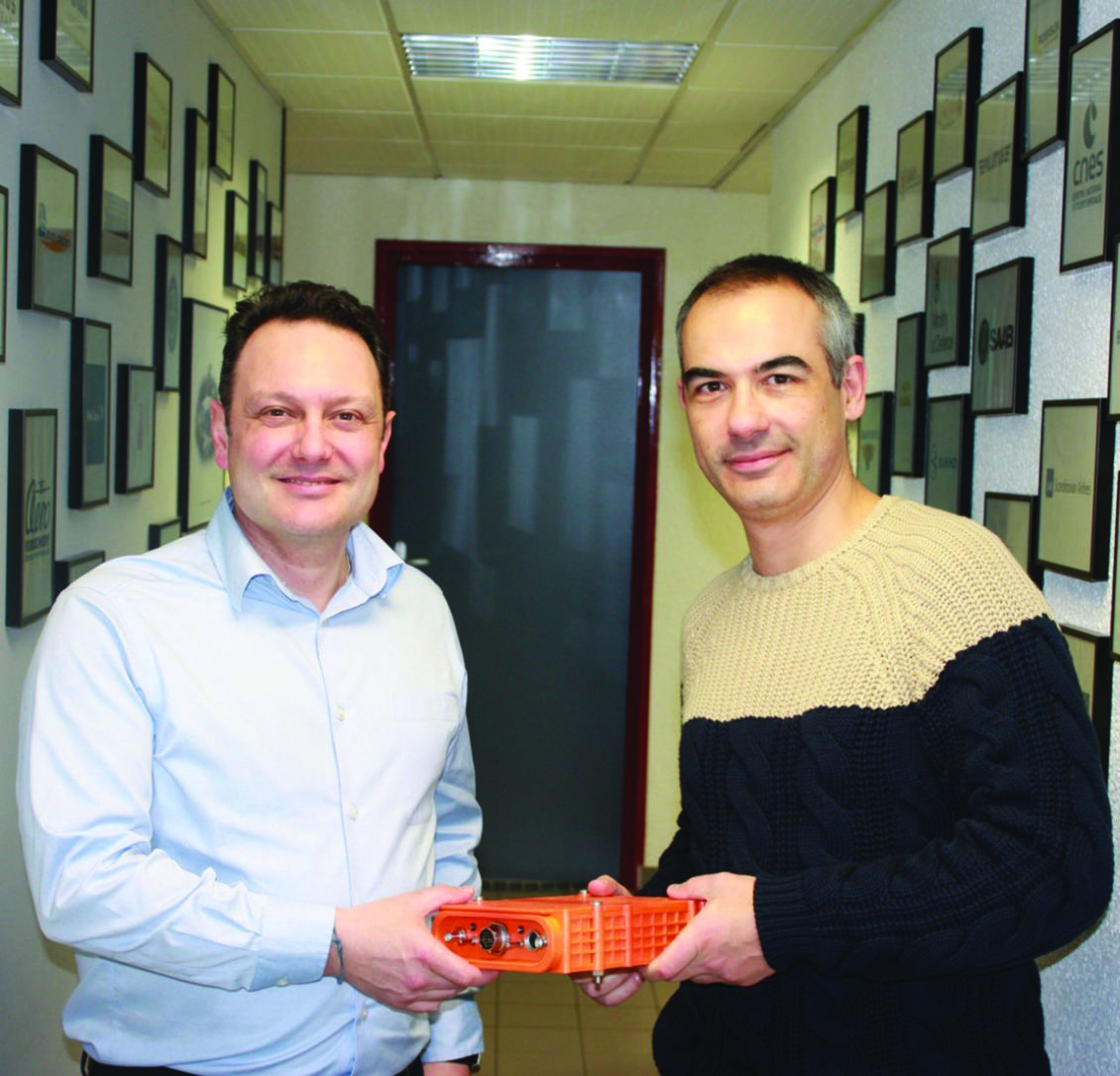The French supplier is unveiling its new emergency locator transmitter (ELT) at the Singapore Airshow, where it will also be seeking to consolidate its presence in the defence sector.
The Singapore Airshow should be the ideal venue for Orolia to present the latest addition to its product line — not least because airlines in the region are still haunted by the memory of the mysterious disappearance of Malaysia Airlines Flight 370. Orolia, which specialises in resilient positioning, navigation and timing (PNT) solutions, has chosen the venue to take the wraps off its latest emergency locator transmitter (ELT), the Kannad-Ultima Distress Tracking Emergency Locator Transmitter (ELT-DT).
Orolia's McMurdo division is leading the development of next-generation emergency locator beacons under the European Commission's Helios project, in partnership with Airbus, Air France-KLM, French space agency CNES and Cobham. The project is seeking to develop a new system that can be used to automatically track commercial transport aircraft during all phases of flight.
Christian Belleux, Aviation & Military Product Line Director at Orolia, explains that the company is particularly focused on the distress phase. The Kannad-Ultima features a programmable “trigger-in-flight” capability, which detects imminent distress situations by analysing flight events and automatically sends a distress signal including the aircraft position. The Return Link Command Service enables an activation from the ground if there is uncertainty about the aircraft status or if attempts to communicate with the flight crew are unsuccessful — a capability that was demonstrated in laboratory tests in November 2017. The system is designed to take advantage of the capabilities offered by Europe's Galileo global navigation satellite system.
The Kannad-Ultima ELT-DT will be fully compliant with ICAO's Global Aeronautical Distress Safety System (GADSS) concept and the latest FAA requirements for lithium batteries. Weighing less than 2kg, the unit will be located in the rear section of the aircraft and is designed to transmit a distress signal every five seconds for a period of 24 hours.
Orolia will be kicking off its marketing campaign for the new system during the show. It is already attracting interest from the airframers, who will be able to offer the system on new-build aircraft as of 1st January 2021. It will also be available for retrofit on existing aircraft as of the end of 2019. The system will be produced in France.
During the show, the company will also be seeking to consolidate its position in the defence sector. It already supplies distress beacons to number of air forces in the region (Singapore, Taiwan, Malaysia …). It recently signed a contract to equip Sea Hawk helicopters operated by the Japan Air Self-Defence Force. Also in the defence sector, following a development contract signed with the U.S. Army, Orolia is developing a new generation of lightweight personal distress beacons for ground troops under different operational scenarios.
Orolia already comprises seven companies in France, the U.S., the UK, the Netherlands and Russia, but is anxious to further extend its worldwide presence. Following an initial commercial office in Beijing, it recently opened a new office in Singapore. It has also established a foothold in Morocco. Taken together, these developments will result in a change of scale — sales are set to jump by a factor of three within five years, to 300M€.
The company plans to push ahead with its external growth strategy. Its most recent acquisition, announced in April 2017, was Netwave, a leader in Voyage Data Recorders (VDRs) for the global maritime market and a specialist in automated vessel monitoring and integrated safety services.
Three years earlier, the company had acquired Technoscience, marking a major step in its ambitions to develop its activities in the aviation sector. Christian Belleux explains that the acquisition of Technoscience, a specialist in ground stations for the Cospas-Sarsat programme, positioned Orolia as the only company capable of supplying a single-vendor, end-to-end Cospas-Sarsat emergency solution from distress beacons to satellite communications to mission control centres equipped with search and rescue management software.
The company could undertake additional acquisitions to further enhance the resilience of its PNT solutions.
For now, Orolia is pushing ahead with a recruitment drive aimed essentially at its R&D activities, in which it invests 12% of sales. After hiring 13 people in 2017, the company is looking to take on a further 12 people in the course of the coming year.
To read our full Singapore Airshow 2018 preview issue, click here.

